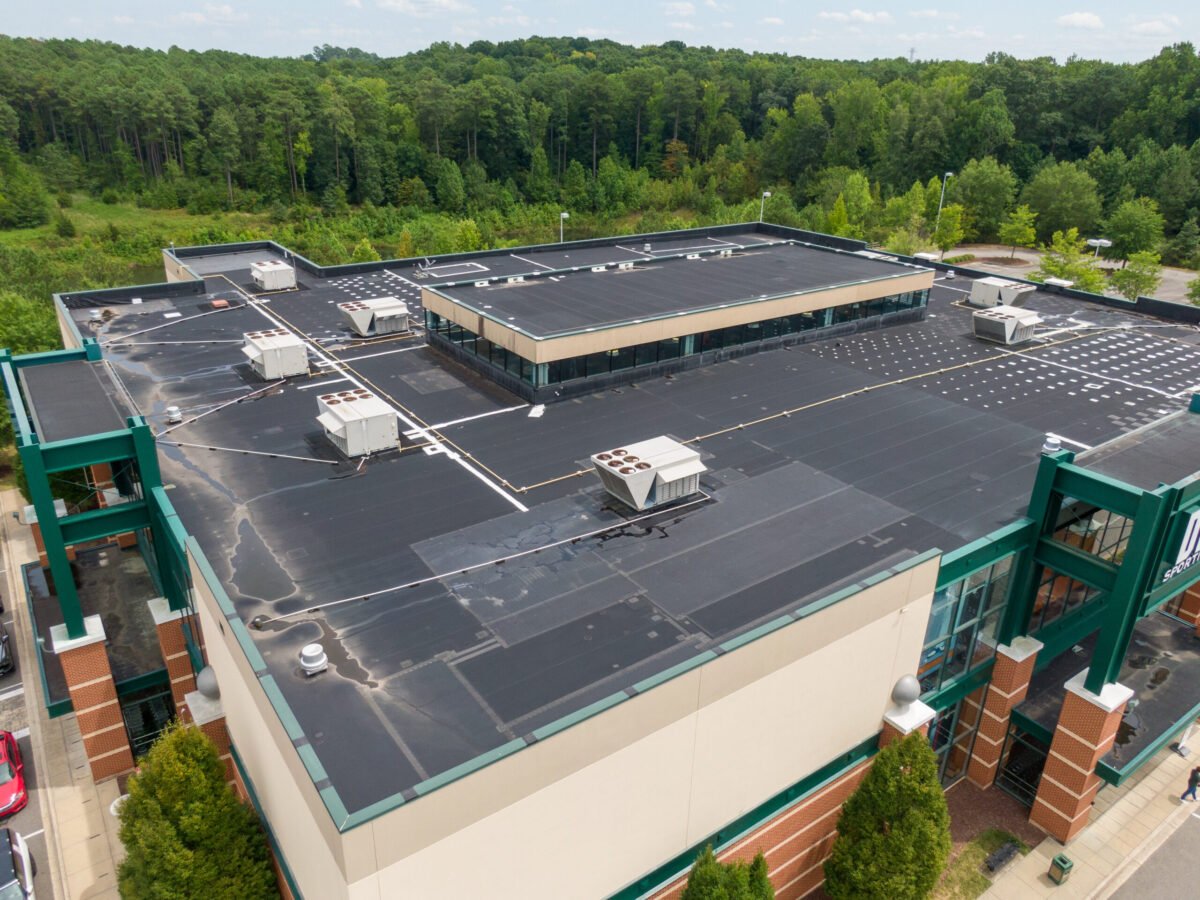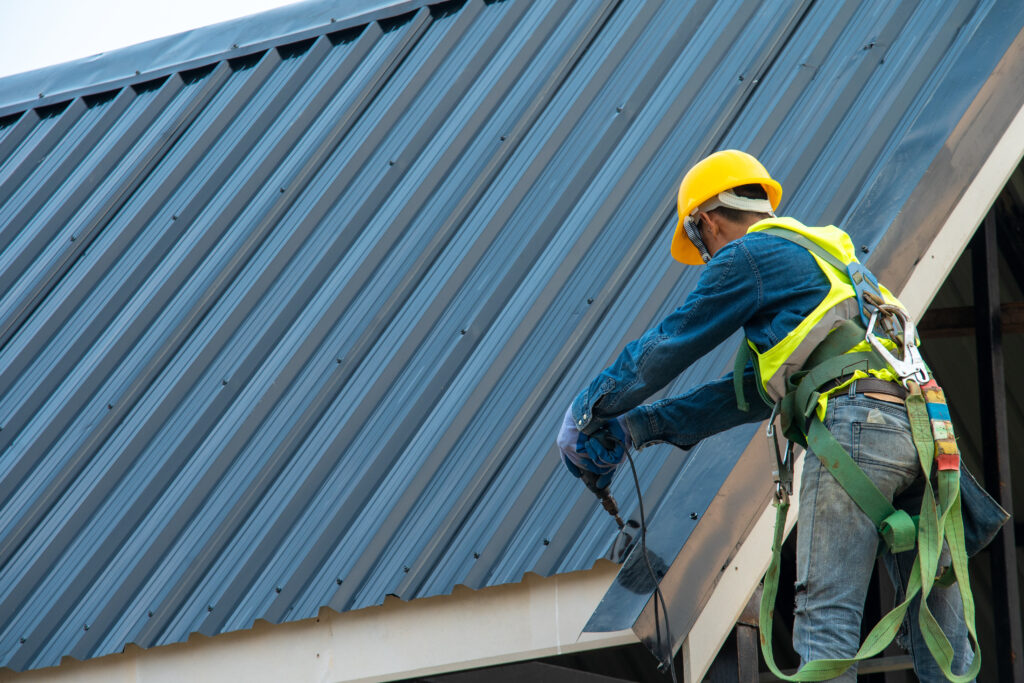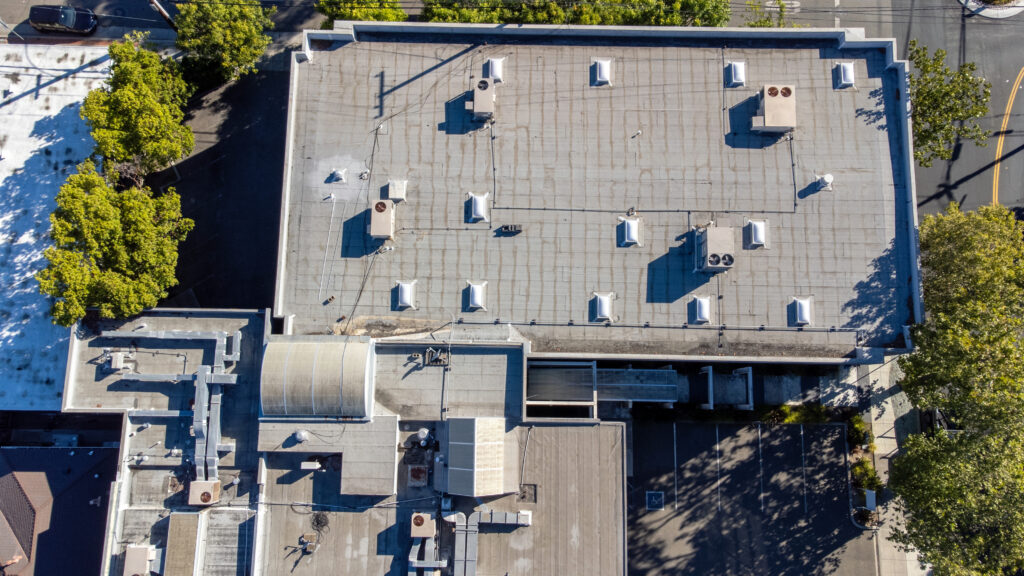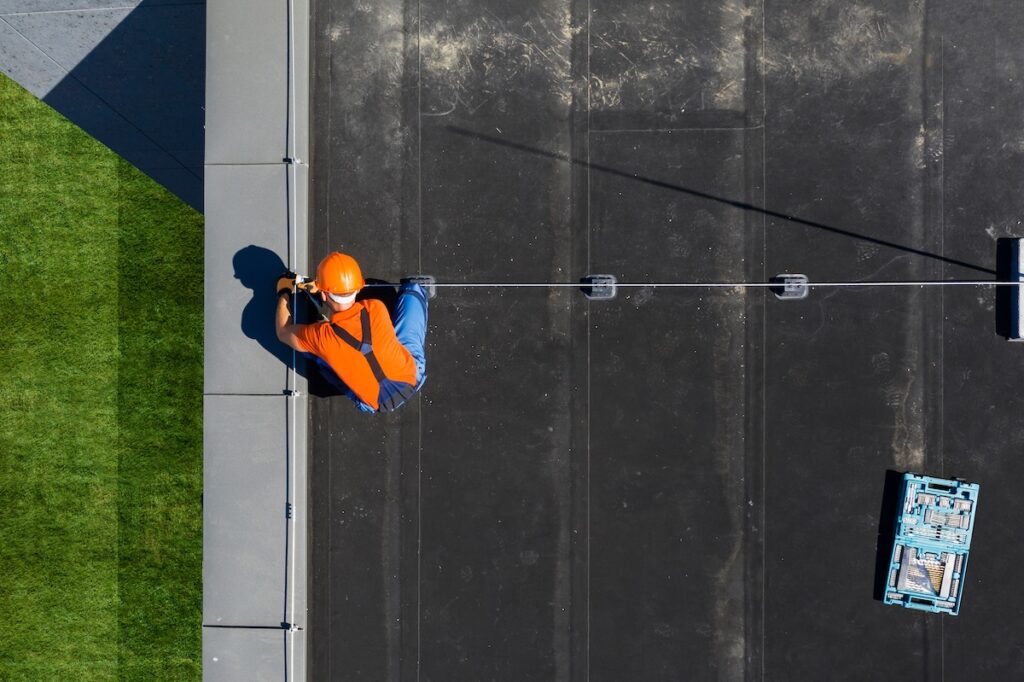

Commercial Roof Replacement Guide for Business Owners
Posted September 9th, 2025 | 6 min. Read
A roof is one of the most critical components of any commercial building, protecting your assets, employees, and customers from the elements. Over time, however, wear and tear are inevitable. A commercial roof replacement becomes a necessary investment to ensure the safety and integrity of your property. Navigating this process can feel daunting, but with the right guidance, you can make informed decisions that protect your business for years to come.
Here’s what we’ll cover:
- The importance of a timely roof replacement
- A step-by-step guide to the replacement process
- Signs that indicate your commercial roof needs attention
- Key factors to consider when choosing a roofing contractor
⚠️ Why a Timely Roof Replacement Is Crucial

Delaying a necessary roof replacement can lead to more significant problems down the line, turning a manageable project into a costly emergency. A proactive approach not only safeguards your building but also provides substantial benefits that impact your bottom line.
A well-maintained and structurally sound roof is a fundamental aspect of property management. It prevents disruptions to your daily operations and ensures the longevity of your commercial space. Here are some of the key advantages of addressing your roofing needs promptly:
- Protects Your Assets: A new roof prevents water damage to your inventory, equipment, and the building’s interior structure, saving you from expensive repairs.
- Improves Energy Efficiency: Modern roofing materials offer better insulation, which can significantly lower your heating and cooling costs and reduce your building’s carbon footprint.
- Enhances Safety: It eliminates risks associated with leaks, mold growth, and structural weaknesses, creating a safer environment for everyone in the building.
- Boosts Property Value: A new roof is a significant upgrade that increases the market value of your property and improves its curb appeal.
- Ensures Code Compliance: A replacement ensures your building meets current building codes and regulations, avoiding potential fines or legal issues.
✅ 7 Steps in the Commercial Roof Replacement Process

Understanding the commercial roof replacement process from start to finish helps you know what to expect and ensures a seamless project. This systematic approach allows for careful planning, quality execution, and minimal disruption to your business operations.
Each stage is crucial for achieving a durable, long-lasting roof that meets your specific needs. Let’s break down the key steps involved.
1. Thorough Roof Inspection and Assessment
The first step is a comprehensive evaluation of your current roof’s condition. A professional contractor will identify areas of damage, assess the underlying structure, and determine the extent of the necessary work.
- Detailed Analysis: The inspection should cover the roof membrane, flashing, drainage systems, and insulation to get a complete picture.
- Documentation: The contractor should provide a detailed report with photos and recommendations, outlining why a replacement is needed.
2. Choosing the Right Roofing Materials
Selecting the appropriate materials is vital for the longevity and performance of your new roof. Your choice will depend on your building’s structure, climate, and budget.
- Material Options: Common choices for commercial roofs include TPO, EPDM, PVC, metal roofing, and built-up roofing (BUR).
- Expert Guidance: A knowledgeable contractor can explain the pros and cons of each option and help you select the best material for your needs.
3. Detailed Project Planning and Budgeting
Once you’ve chosen your materials, the contractor will develop a detailed project plan and provide a comprehensive estimate. This stage ensures transparency and helps you plan your budget accordingly.
- Clear Scope of Work: The plan should outline all tasks, from tear-off to installation and cleanup, along with a projected timeline.
- Transparent Quote: The estimate should break down all costs, including labor, materials, permits, and any potential contingencies.
4. Obtaining Necessary Permits
Before any work begins, your roofing contractor must secure the required permits from local authorities. This ensures the project complies with all local building codes and regulations.
- Code Compliance: The contractor should be knowledgeable about local requirements to avoid delays or legal issues.
- Handling Paperwork: A reputable professional will manage the entire permitting process on your behalf.
5. Preparing the Worksite
Proper site preparation is essential for safety and efficiency. The contractor will take steps to protect your property and ensure the work area is secure for both their crew and your employees.
- Safety Measures: This includes setting up safety barriers, protecting landscaping, and ensuring clear access for equipment and materials.
- Communication: Your contractor should communicate their plan for managing debris and minimizing disruption to your business operations.
6. Roof Removal and Installation
This is the core phase of the project, where the old roof is removed and the new one is installed. The crew will work systematically to ensure a high-quality installation.
- Tear-Off: The existing roofing material is carefully removed down to the roof deck.
- Installation: The new roofing system, including insulation, underlayment, and the primary roofing material, is installed according to manufacturer specifications.
7. Final Inspection and Cleanup
After the installation is complete, a final inspection is conducted to ensure everything meets the highest standards. The work area is then thoroughly cleaned, leaving your property in pristine condition.
- Quality Assurance: The project manager will perform a walkthrough to verify the quality of the workmanship and address any final details.
- Debris Removal: All old materials and construction debris will be removed from your property.
🔍 Signs Your Commercial Roof Needs Replacing

Knowing when to replace your commercial roof can save you from unexpected emergencies and costly damages. Regular inspections can help you spot early warning signs, but some indicators are more urgent than others.
Paying attention to these signs allows you to plan for a replacement before a minor issue becomes a major crisis. Here are common indicators that your roof is nearing the end of its lifespan:
- Frequent Leaks and Water Damage: Persistent leaks or water stains on ceilings and walls are clear signs that your roof’s waterproofing has failed.
- Visible Bubbling or Blistering: Bubbles or blisters on the roof’s surface indicate trapped moisture, which can compromise the entire roofing system.
- Cracked or Damaged Flashing: The seals around vents, pipes, and skylights are critical. If the flashing is cracked or deteriorating, it creates entry points for water.
- Increased Energy Bills: A sudden spike in your energy costs could mean your roof’s insulation is no longer effective, forcing your HVAC system to work harder.
- Old Age: Most commercial roofs have a lifespan of 20-30 years. If your roof is approaching this age, it’s wise to start planning for a replacement, even if there are no obvious signs of failure.
- Pooled Water: If water stands on your roof for more than 48 hours after rain, it points to drainage issues that can accelerate deterioration and add stress to the structure.
🤝 Your Trusted Partner for Commercial Roofing
A commercial roof replacement is a significant investment, but it’s one that pays dividends in safety, efficiency, and peace of mind. By understanding the process and working with a reliable contractor, you can ensure your business is protected by a durable, high-performing roof.
If you’ve noticed any of the warning signs or believe it’s time for an upgrade, don’t wait for a small problem to become a disaster. Contact Certified Roofing Solutions today for a free estimate and let our experts provide a customized solution for your business.

